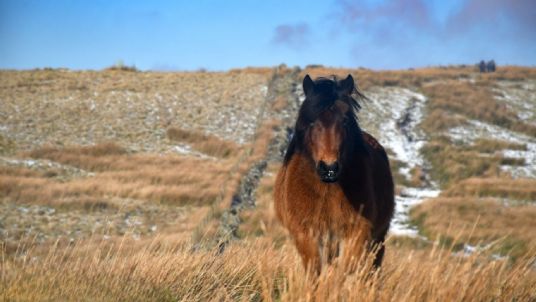Jane van Lennep attends the European Workshop on Equine Nutrition
04 October 2010
EWEN Conference 2010.
The biennial conference of the European Workshop on Equine Nutrition was held this year at the Royal Agricultural College in Cirencester. Leading vets and scientists from Europe and America met to exchange views and update us on the latest research.
One thing was clear from the outset: horses are not well adapted to eating starchy diets and speaker after speaker reinforced this thesis. If starchy food is given then it seems to be the accepted norm that 1 g of starch per kg of body weight is the maximum that should be given in any one of only 2 meals which means a 500 kg horse should not have more than 500g of starch at any one time – around 1 kg of standard mix or cubes. Even at this level the risk of ulcers is increased. This figure is less than that previously suggested, which was 2g per kg.
From America, Prof Ray Geor (Michigan State University) demonstrated clearly the effect of an empty stomach on the development of ulcers, as gastric acid easily splashes on to the unprotected part of the stomach. Fibrous food in the stomach retains the gastric juices in the appropriate area. This fibrous food also helps to maintain the integrity of the valve to the small intestine. In the absence of food, bile can back-flow into the stomach. A graphic illustration of this was shown, with footage from a gastroscopy examination in which a squirt of bile was seen impacting directly onto an ulcer caused by bile. Ulcers are very much a cause for concern and are very common, being linked with cereal feeding and long periods of fasting as well as the work load and stressful factors.
Whilst Ray Geor was suggesting that starch feeding should be kept to a minimum and a long adaptive period be employed, due to the horse being far more adapted to digesting fibre than starch, Dr Lindberg from the Swedish University of Agricultural Science, had shown that there was no loss of performance in racing Trotters fed a high quality forage diet with no starch. These horses had lower heart rates, lower respiratory rates and may have been easier to handle, than controls fed conventionally. He supported the view that fat/oil can be used to increase energy density of the diet if necessary.
A team of scientists from the University of Helsinki has done some interesting work into the effects of linseed. It was unfortunate that their linseed was expeller rather than full fat linseed, but they demonstrated that the linseed was effective at removing sand accumulations in the hind gut of horses closely grazed on sandy soils. They did not achieve such good results with horses suffering ulcers, but no other adjustments were made to the feeding, management or routine of these horses. On its own, linseed may not have an effect but it would be interesting to study its effect as part of an improved system of management taking in other considerations as well.
How horses eat naturally came under scrutiny. In the wild situation, they rarely cease eating for as long as 2 hours and were not ever observed fasting for more than 4 hours. Their total intake is assumed to be self-regulated at 2.5% of body weight, but this varied considerably and some horses were able to eat 5% of their body weight. The lower safe limit of intake is generally assumed to be 1.5% and 2% better, but in one trial on obese ponies, intake was restricted to 0.5% with no apparent ill effects. However, low intake, following for instance dental failure, especially in susceptible animals such as donkeys, Shetlands and Miniature Horses, can lead to Hyperlipaemia, in which fat is mobilised into the blood with a high mortality rate. (F. Burden, The Donkey Sanctuary). Calculations of feed intake were not adjusted to the assumed correct weight of the horse but on actual body weight, so the very low figures used may not have been such a small proportion of weight had the ideal weight been used as a base line.
It was consistently observed that horses ate more during the day than at night, with day time consumption up to 1.5 times that of night time. Time spent eating varied seasonally and with needs, as in foal mares and those lactating spent more time grazing. These figures apply to out-kept equines. And it was shown conclusively that rasping sharp teeth dramatically increased intake. The importance of structural carbohydrates in the diet was again underlined. (A.D. Ellis, Nottingham Trent University).
In all, this was a comprehensive and enlightening conference, with the clear message that forage is the best and most essential feed for horses. Restricting access for forage results in stereotypies, ulcers, behavioural issues and metabolic alterations. Mimicking nature by providing unlimited access to forage would appear to be the way to a healthier horse.
Jane van Lennep/Simple System Ltd.
September 2010.



